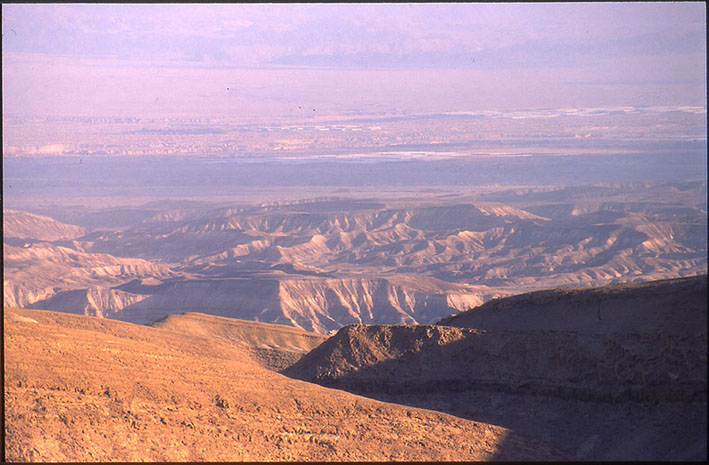|
Other Archaeological Sites / The Neolithic of the Levant (500 Page Book Online) Wadi Arabah in the Great Rift Valley) SEE ALSO: Wadi Feinan -- Rujm Taba -- Bir Madhkur
Encyclopedia Judaica --- Second Edition (2007) See ARABAH in the Jewish Virtual Library THE ARABAH (Hebrew הֲָעָרָבה, Aravah, Arabic al-ʿAraba; “[arid] steppe” “desert”): name of two stretches of depressed ground extending north and south of the Dead Sea. The biblical Arabah, except in one instance, refers to the northern Arabah, i.e. the Jordan Valley from the Sea of Galilee to the Dead Sea (which is also known as the “Sea of the Arabah”). Thus the land conquered by Moses in Transjordan included “the Arabah also, the Jordan being the border thereof from Chinnereth even unto the sea of the Arabah, the Salt Sea, under the slopes of Pisgah eastward” (Deuteronomy 3:17); or more simply “and all the Arabah beyond the Jordan eastward even unto the sea of the Arabah under the slopes of Pisgah” (Deuteronomy 4:49). It was left to Joshua to conquer “the Arabah” on the other side of the Jordan (Joshua 11:16). Within the northern Arabah the plains of Jericho are called “the Araboth [plural of Arabah] of Jericho” and those across the stream “the Araboth of Moab”. Only in Deuteronomy 2:8 does the Arabah refer to the Rift Valley south of the Dead Sea but in the course of time the term was applied only to this southern area. The Arabah is now mainly a sandy desert with an average yearly rainfall of up to 1 inch. Oases are few and far between. The water has a salt content of up to 17 percent and vegetation is restricted to hardy desert plants such as the tamarisk and acacia. Temperatures vary from 57° f to 93° f (14° c to 34° c) with an average of 73°–75° f (23°–24° c). Traces of ancient agriculture are especially abundant in its northern portion where the Nabateans irrigated and cultivated large areas near Zoar and other places. The cultivation of sections of the Arabah continued into Byzantine times. The copper mines of the Arabah (especially of the Punon (Feinan) region) were exploited as early as the Chalcolithic period (fourth millennium B.C.E) and were perhaps one of the reasons why the kings of Israel and Judah so often fought over this barren wasteland with the kings of Edom. Another reason was to obtain domination of the Red Sea harbor of Eilat at the southern end of the Arabah. Exploitation of the copper mines was resumed in the Roman and Byzantine periods. The Arabah is now divided between Israel and Jordan; the Sodom-Eilat road passes through its western side. At the beginning of the 21st century the Arabah area had a population of 4,500 living in five moshavim, ten kibbutzim and three urban communities. Residents developed special farming techniques suitable to the area’s climate and also operated fisheries. Michael Avi-Yonah / Shaked Gilboa |


